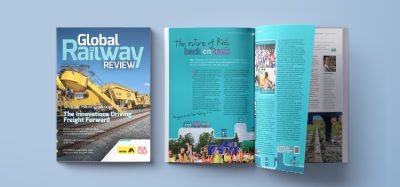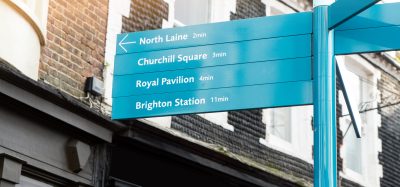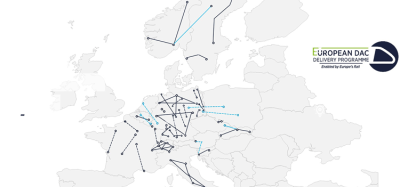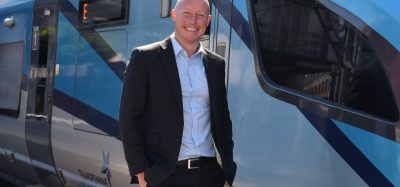Women Inspiring Rail: Q&A with Dyan Crowther, Chief Executive Officer, HS1 Ltd
Posted: 19 September 2019 | Dyan Crowther | No comments yet
For our next Women Inspiring Rail instalment, Dyan Crowther, Chief Executive Officer of HS1 Ltd, explains how she believes it is crucial for operations to focus on improving the passenger experience and her thoughts on diversifying the rail sector’s workforce.
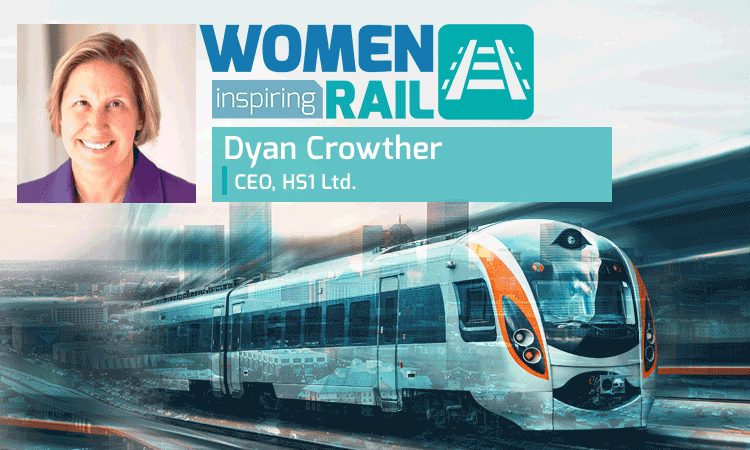

How did your career in rail begin and what does your current job involve?
My career began back in 1986 when I joined British Rail as an Operations graduate trainee, and I have worked in the rail industry ever since. I spent my first year based at London Bridge and working on what was then known as the Southern Region.
I never set out with ‘rail’ in mind, I just knew that I wanted to do something different. Something that didn’t put me behind a desk 24/7, that let me work outside and gain a wealth of different experiences. The great thing about rail is that you can go anywhere in the industry and I’ve definitely done that. I’ve moved around quite a lot. When British Rail was privatised back in the 1990’s I joined Railtrack and have since held a number of positions including at Network Rail and Govia Thameslink Railway. I think it’s important to get a rounded view of the industry, it helps you respect differences and complex interfaces.
Today, I’m the CEO of High Speed One (HS1) Ltd., the UKs only high-speed railway. It’s a unique position for a unique railway and one that I’m immensely proud of. Our strategy is based around protecting what we have, enhancing how we do things and growing our business and it is my job to ensure that we execute that strategy by providing a public service that delivers for our customers at the same time as delivering for our shareholders.
What aspects of your job do you find the most challenging / rewarding, and why?
The benefits that high-speed rail has already brought to the UK in terms of socio-economic growth, a reduced carbon footprint and passenger choice is something that I am really very proud of.
The most rewarding part of my job is being in charge of the UKs only high-speed railway and having the magic of being the gateway into Europe. The benefits that high-speed rail has already brought to the UK in terms of socio-economic growth, a reduced carbon footprint and passenger choice is something that I am really very proud of. More than six million international rail journeys take place on HS1 each year. In a few short hours you can travel on the Eurostar from the centre of London to the centre of Brussels, Paris or Amsterdam on a journey that produces 90 per cent less pollution than catching an aeroplane. We are always working to offer our customers even more choice. We are currently working with our international partners to expand our international reach even further including passengers being able to travel between London and Bordeaux in under five hours. The proposed direct route would take advantage of LISEA’s newly completed 302km-long French high-speed rail line linking Tours with Bordeaux with no need change trains along the way.
In terms of the most challenging aspect of my job, I would say it involves forward thinking. Our concession to own and operate the HS1 infrastructure and the stations along the route means that we must think about the long-term as well as the present. Having the courage to look 30 years in advance and really start to think about what type of railway you’re going to need then and making sure that you start preparing for it now.
What is it about the rail industry that you are most passionate about?
It must be the customer. They are who get me out of bed in the morning. Without our passengers, our industry wouldn’t exist. They are at the forefront of everything we do and always have been, wherever you are in the sector.
Our customers’ expectations are constantly growing and it’s up to people like me to make sure they are getting what they need.
Getting the timetabling right, making sure trains run on time and getting our passengers safely to their destination is of course paramount but it is so much more than that. Our customers’ expectations are constantly growing and it’s up to people like me to make sure they are getting what they need. Gone are the days where it was just enough to get people form A to B. Our customers now want to be able to travel to work without the hassle of digging around for their paper tickets, be able to send a few emails on their way or stream the latest box set and then pick up their breakfast at the station before they get into the office. It’s about the entire package.
I am always thinking about what could make our passengers’ lives easier? What could make their commute more comfortable? How can we make rail travel more efficient? It’s why I do what I do.
At HS1 we are constantly striving to ensure we are giving our customers what they expect. It’s part of our job as infrastructure managers. I’m delighted that we will be introducing 4G capability along the high-speed line and at all our stations by summer 2020.
I am always thinking about what could make our passengers’ lives easier? What could make their commute more comfortable? How can we make rail travel more efficient? It’s why I do what I do.
What has been your biggest achievement / proudest moment so far in your rail career?
I’m always proud when people ask me to be their mentor or coach. I’ve mentored a substantial amount of women and men in the rail industry over the past 30 years. I’m a big believer in learning from experience – your own and other peoples and so I’m keen to share what I’ve learned with those around me. I’ve only got to where I am today because of the guidance and advice my mentors gave to me on my journey – and still do. People took the time to listen to me and share their advice and I try to do the same in return.
I’m incredibly proud to have been the first-ever female managing director for Arriva Trains Northern in 2002. In an industry that is still, to this day, dominated by white middle-aged men, I consider this to be quite an achievement!
I’m also incredibly proud to have been the first-ever female managing director for Arriva Trains Northern in 2002. In an industry that is still, to this day, dominated by white middle-aged men, I consider this to be quite an achievement! When I first started out, there weren’t even ladies’ toilets in the signal box where I was working. The industry has come a long way since then, but we still have some way to go.
How has the rail industry evolved since you joined? What have been the biggest changes?
The biggest change that I’ve been conscious of is an increasing effort from industry to evolve and respond to changing customer needs by really putting the customer first. Take stations for example, they used to be pretty unpleasant places to be and somewhere you had to visit just to catch your train. Now they are destinations in their own right. I’m incredibly proud that St Pancras International holds a 93 per cent passenger satisfaction rating and it speaks volumes that one in six of those visiting the station aren’t actually there to catch a train.
The biggest change that I’ve been conscious of is an increasing effort from industry to evolve and respond to changing customer needs by really putting the customer first.
Training and development has also evolved drastically. It now sits at the forefront of industry with swathes of apprenticeship schemes covering multiple disciplines. Whatever your interest – whether it’s engineering, design, operations, construction, systems management – there truly is something for everyone.
I think privitisation also brought with it a lot of new thinking. For example, the evolution and investment in new rolling stock has been really phenomenal since I joined the industry and we must strive to make the most of these advancements. As passenger numbers continue to grow, it is vital that this evolution follows through to the track and is utilised to overcome the capacity restraints across the network.
Who in the rail community has been an inspiration to you and why?
I’ve been fortunate enough to come by so many inspirational people in the rail community during my time but there are two people who really stand out.
Bob Clarke was my old Zone Director on London North Eastern when I had my first executive job and he gave me some advice that I’ve held with me throughout my entire career. He once said to me: “Just do it. Believe and do it. Stop putting constraints on yourself”. And he was right. People shouldn’t constrain themselves by focusing on the skills they lack. Instead, focus on the skills they have. He probably doesn’t even remember saying it to me, but it has stuck with me ever since.
The second person that comes to mind is Robin Gisby, now the Chairman at London North Eastern Railway. I had the privilege of working with Robin when I joined Network Rail as a Route Director, he was my boss for almost 10 years and was also one of the most visionary and inspiring men I have ever worked for. He struck the perfect balance between giving you the scope and breadth you needed to test yourself but was always there to advise and guide without interfering.
What can be done to diversify the workforce in the rail sector? What advice would you give to those thinking about pursuing a career in rail?
We have some really fantastic apprenticeship schemes out there for example, but it can be confusing and so many young people of all genders and backgrounds struggle to know where to start.
The lack of diversity in the rail sector remains an issue to this day and I think part of the problem is the way in which we market ourselves as an attractive career choice to our future workers. Our image of hard hats, orange jackets and manual labour is outdated and not representative of the sector as it exists today. Work is taking place to address this in isolation, but in truth, we need to work together as a united sector rather than marketing parts of the industry in a piecemeal approach. We have some really fantastic apprenticeship schemes out there for example, but it can be confusing and so many young people of all genders and backgrounds struggle to know where to start. We need to be out there guiding and advising – there is a wealth of support out there if you know where to look.
We know that a diverse workforce generates the best results. We read about it every day. We need to do less talking about it and more acting to implement it!
It’s also not just about encouraging a diverse workforce into the sector. It’s about retaining the talent once you have it. You do that by creating working environments that people want to stay in. Inclusive cultures, attractive packages, flexible working arrangements, knowledge-sharing and mentoring. We know that a diverse workforce generates the best results. We read about it every day. We need to do less talking about it and more acting to implement it!
My advice to those thinking about pursing a career in rail? Just do it. It’s great!
If you would like to take part in the Women Inspiring Rail series, or would like to nominate a colleague to part, please email: Craig Waters, Editor, Global Railway Review.
Related topics
High-Speed Rail, Infrastructure Developments, The Workforce, Women in Rail




